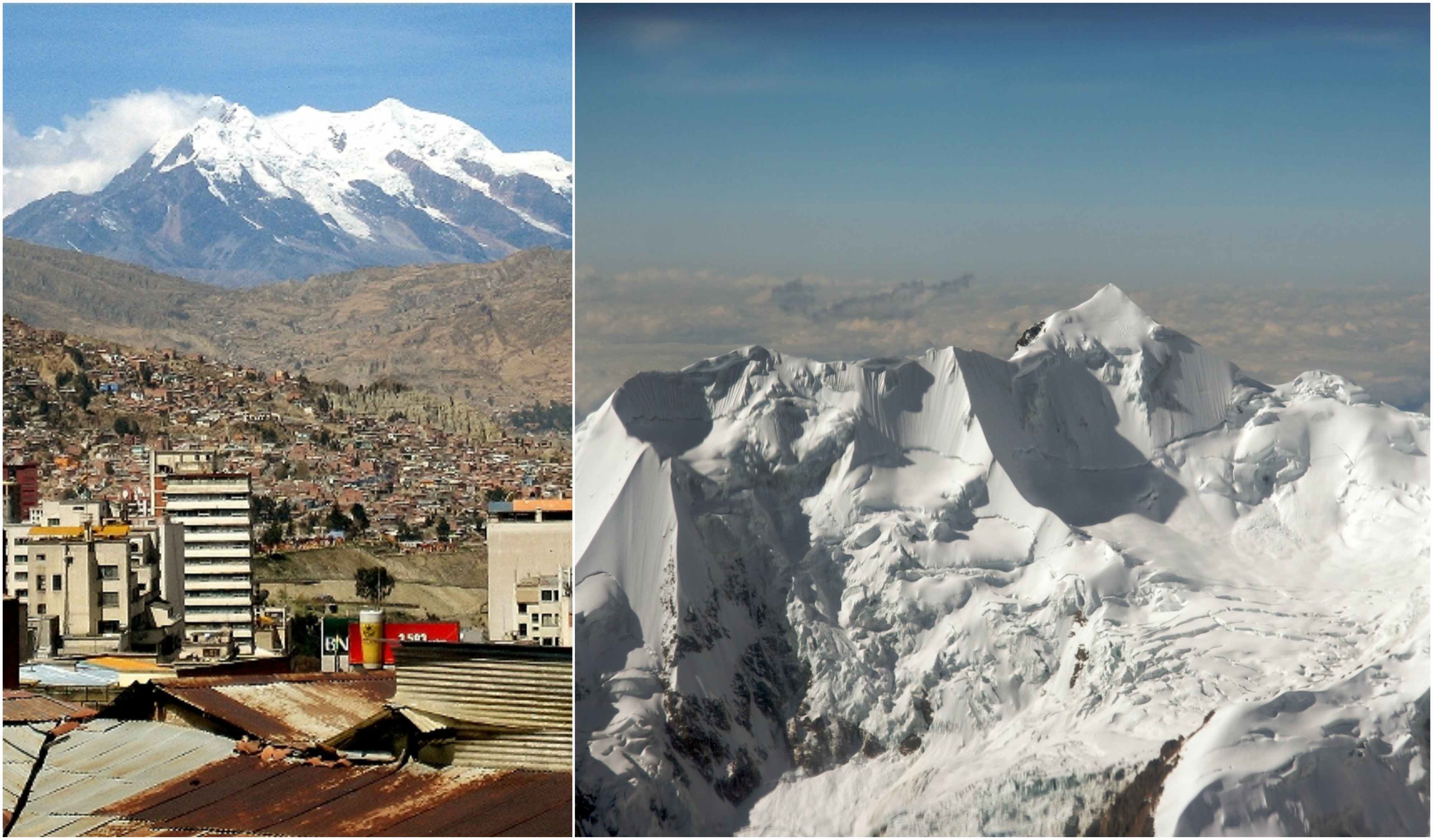Illimani – Climbing the highest mountain in the Cordillera Real in the Andes

llimani is a mountain that dominates the background of the city of La Paz, in Bolivia. It stands high above the big city and keeps it in shadow during the morning with only El Alto gets bathed in sunshine. Illimani is the highest mountain in the Cordillera Real, a part of the Andes’ sub range, the Cordillera Oriental. This mountain, with its peak permanently covered with snow, is 21,122 feet (6,438 meters) above sea level, and after Nevado Sajama, it is the second highest Bolivian peak.
Geologically, the mountain is primarily composed of granodiorite, intruded during the Cenozoic era into the sedimentary rock, which forms the bulk of the Cordillera Real. It has five peaks, among which are Nevado Illimani, popular with mountain climbers, and the south summit which is the highest.

The southern summit was first attempted by J.C. Ocampo, J. de Grumkow, and the famous French explorer Charles Wiener in 1877. The trio failed to reach their aim but managed to climb the southeastern sub-summit which Weiner named “Pic de Paris” and left a French flag on the top. The south summit was first climbed two decades later, in 1898, by Sir William Martin Conway, an english mathematician and mountaineer who explored the area along with Aconcagua and some mountains in Patagonia.
At least, that’s the first recorded ascent of the peak. However, Conway and his two Swiss guides found a piece of Aymara rope at the height of over 20,000 feet (6,000 meters). That means that there is some evidence that the peak may have been climbed successfully before.
Illimani means “water bearer” in the Aymara language. It is considered the queen of the mountain gods in Bolivia. Even though the Nevado Illimani and the southern peak are a relatively easy challenge for mountaineers, the other three are much more difficult to climb.

The current standard route for climbing the mountain goes through the west ridge of the main summit, and it usually takes three days. During the first day, the first base camp, which is at 13,878 feet (4,230 meters), should be reached. It takes three hours driving from La Paz to get to the Estancia Una where the climbing starts. The climb to the base camp takes up to three or four hours. The next day there is a five hour climb on a mostly rocky trek to the high camp, the “Condor’s Nest” at 18,208 feet (5,550 meters). The third day, the climb starts at 2 am over glacial terrain up to the summit. And a return during the last day.

The mountain is the major landmark for El Alto and La Paz. It is the subject of a lot of poetry and local songs. The most popular refrain praising Illimani is:
“¡Illimani, Illimani, centinela tú eres de La Paz! ¡Illimani, Illimani, patrimonio eres de Bolivia!” (“Illimani, Illimani, you are the sentinel of La Paz! Illimani, Illimani, you are Bolivia’s heritage!”)
If you have any comments then please drop us a message on our Outdoor Revival Facebook page
If you have a good story to tell or write a blog then let us know about it on our FB page. We’re also happy to receive article or review submissions and we’d love to hear from you.
We live in a beautiful world, get out there and enjoy it. Outdoor Revival – Reconnecting us all with the Outdoors.
